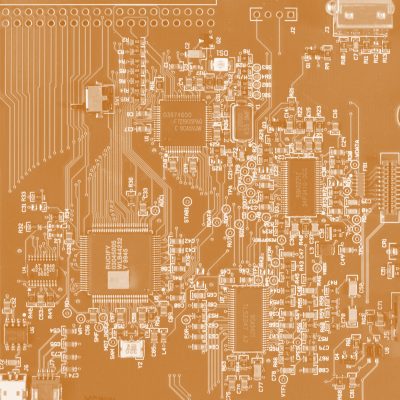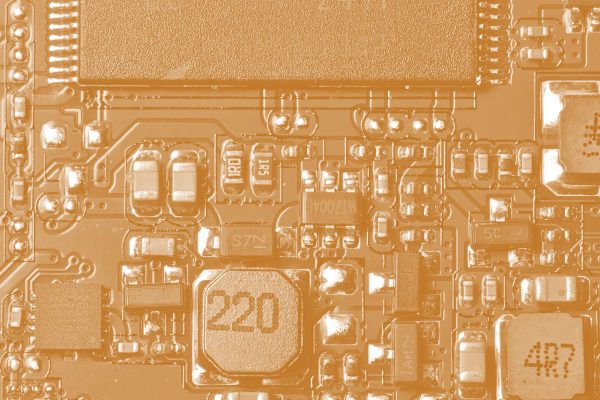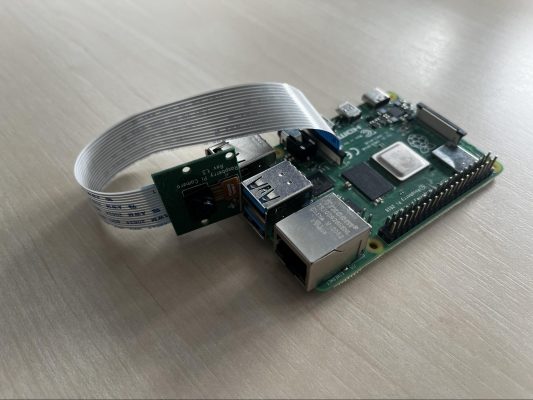Video surveillance is one of the fastest-growing markets within the Internet of Things (IoT), i.e., smart systems. As a result, the demand for advanced camera modules, a main component of smart video cameras, has surged. Today’s camera modules provide enhanced image quality, improved low-light performance, and sophisticated features such as motion detection and facial recognition.
However, there are so many options on the market that it’s often challenging to know which module to choose. You can start by understanding how the features of a camera module, particularly its image sensor, affect its functionality in your IoT system.
What is an image sensor in IoT?
Every camera module needs an image sensor to be able to “see” and record images or video. While IoT developers rarely buy image sensors as individual components – since most camera modules already come with an image sensor on board and it’s a lot more work to build a module from scratch – the names of the camera modules often derive from the image sensors they contain. For example, the Supertek 2MP IMX291 camera module uses the Sony IMX291 camera sensor.
An image sensor is a semiconductor device that captures light and converts it into an electrical signal. The two main types of image sensors are:
Charge-coupled device (CCD): Captures high-quality images with low noise but consumes more power.
Complementary metal-oxide semiconductor (CMOS): More power-efficient and faster, making it popular in IoT applications.
An image sensor in an IoT device works by capturing light through a camera lens, where the light then strikes the sensor’s array of pixels, a grid of tiny light-sensitive elements on an image sensor. Each pixel represents a single point in the captured image and detects the intensity and color of the light hitting it.
When light enters the camera lens, the lens focuses the light onto the array of pixels, and each pixel converts the light into an electrical signal corresponding to the brightness and color at that specific point. Collectively, the camera processes the signals from all the pixels to form a complete digital image. The resolution of an image sensor, which manufacturers usually measure in megapixels, depends on the number of pixels in the array: more pixels generally mean higher resolution and more detailed images. More pixels can also mean higher cost, though, so it’s important to make sure you have the right option for your price point and particular application.
Types of Camera Modules
There are some common phrases and acronyms that you may have seen in online listings for video camera modules. These terms are meant to point you in the right direction when it comes to choosing the best option for your system. Let’s go over what some of those typical phrases and acronyms mean one at a time.
1. Original equipment manufacturer (OEM) camera module
An original equipment manufacturer (OEM) camera module is a pre-assembled camera component that manufacturers specifically designed for integration into various devices rather than as a standalone camera. These modules include the image sensor, lens, and sometimes additional features like autofocus mechanisms, image processing chips, and connectors.
IoT devs use OEM camera modules in smartphones, tablets, drones, smart car systems, and other IoT devices. By using OEM camera modules, device manufacturers can focus on other aspects of the system and reduce development time, as the original equipment manufacturer will already have optimized the camera’s design and performance. Most camera modules you’ll see on the market are OEMs.
2. CMOS camera module
Again, CMOS sensors are known for their efficiency, speed, and lower power consumption compared to CCD sensors. This means CMOS sensors are in high demand and many camera modules use them.
CMOS camera modules offer several advantages, such as faster readout speeds, enabling high-frame-rate video capture and real-time image processing. Additionally, CMOS technology allows for more complex and flexible image processing directly on the chip, which can include features like noise reduction, dynamic range adjustment, and on-the-fly image enhancements.
3. 4K camera module
A 4K camera module is a camera component designed to capture images and videos at a resolution of approximately 3840 x 2160 pixels, which is four times the resolution of standard full HD (1080p). This high resolution provides exceptional detail and clarity, making it ideal for applications where image quality is paramount, such as industrial security systems that need advanced facial recognition capabilities.
These 4K camera modules include an image sensor, lens, and often additional features such as autofocus, image stabilization, and advanced image processing capabilities. The modules are used in various devices and applications, including smartphones, action cameras, drones, security cameras, and professional video equipment.
The benefits of using a 4K camera module include the ability to capture highly detailed images, allowing for better digital zoom and cropping without significant loss of quality. Note that 4K camera modules are more expensive than average, which means they’re less likely to be used in home surveillance systems in which quality video isn’t particularly important.
4. Spatial light modulator (SLM) camera
A spatial light modulator (SLM) camera is an advanced imaging device that uses a spatial light modulator to manipulate the light waves before they are captured by the camera’s image sensor. A spatial light modulator is a device that can dynamically adjust the intensity, phase, or polarization of light in a controlled manner. This technology enables the camera to perform complex optical functions, such as adaptive optics, holography, and high-speed image processing.
In an SLM camera, the spatial light modulator is typically placed in the optical path of the camera system. By modulating the light in real-time, the SLM can correct for optical aberrations, focus light more precisely, or create programmable diffraction patterns. This results in improved image quality, enhanced resolution, and the ability to capture detailed information about the light field, such as depth and phase information.
SLM cameras are used in a variety of advanced applications, including scientific research, medical imaging, industrial inspection, and augmented reality. In scientific research, for example, SLM cameras can be used in microscopy to achieve super-resolution imaging, allowing researchers to observe fine details beyond the diffraction limit of light. In medical imaging, they can improve the clarity of images obtained through techniques like optical coherence tomography. As you can imagine, these cameras are expensive and rarely used for standard video surveillance applications.
5. Infrared (IR) and thermal camera modules
I put these two together because both IR and thermal imaging use infrared radiation to create images. Thermal imaging is actually just a more specific subset of standard infrared imaging. Infrared imaging detects infrared radiation, which is a type of electromagnetic radiation with wavelengths longer than visible light but shorter than microwaves. Standard infrared imaging can detect heat patterns but is not as focused on absolute temperature measurement as thermal imaging. Infrared imaging is excellent for night vision, remote controls, and fiber optics. It can enhance visibility in low-light conditions, but standard infrared doesn’t always provide precise temperature information.
Thermal imaging, on the other hand, specifically converts infrared radiation into visible images that show temperature variations, allowing for the visualization of heat distribution across a surface or environment. It is essential in applications such as building inspections for heat leaks, industrial equipment monitoring for overheating, medical diagnostics for detecting abnormalities in body temperature, and search and rescue operations for locating people based on their heat signatures. Thermal imaging can even visualize heat patterns in complete darkness or through smoke, making it valuable for firefighting, security, and surveillance.
6. 2MP, 5MP, and 8MP camera modules
The terms 2MP, 5MP, 8MP, etc., refer to the resolution of a camera sensor inside a camera module, specifically the number of megapixels (MP) the sensor can capture. A megapixel equals one million pixels. Higher megapixel counts generally provide more detail in an image and allow better digital zoom without loss of detail.
- 2MP Sensors: These are often used in basic surveillance cameras, entry-level smartphones, and webcams for which high resolution is not critical.
- 5MP Sensors: 5MP sensors are common in mid-range security cameras, tablets, and some smartphone cameras, balancing image quality and cost.
- 8MP Sensors: 8MP sensors are found in higher-end smartphones, advanced security systems, and consumer cameras, providing higher detail and better overall image quality.
Camera module vendors
Now that you know what keywords to search for, you may be wondering what brand is the best option. Some top brands for camera modules include Raspberry Pi, Blink, Arduino, and Elegoo. However, IoT developers will often search based on a particular image sensor and then select from a list of modules that contain that image sensor. This method allows the developers to be highly specific about the image sensor features that are best suited for a particular video surveillance application. For that reason, I’ll focus on manufacturers of image sensors and the top image sensor options available from those vendors.
1. Sony Semiconductor Solutions
Sony Semiconductor Solutions, a division of Sony Corporation, specializes in the development and production of semiconductors and sensors. Sony entered the semiconductor business in the 1950s and quickly became a leading manufacturer of innovative technologies. Known for its high-quality image sensors, Sony has a significant market share in the global semiconductor industry.
- IMX291: A 2MP sensor (1920 x 1080 pixels) favored for its excellent low-light performance, used widely in surveillance.
- IMX327: A 2MP sensor (1920 x 1080 pixels) with enhanced sensitivity and improved noise reduction for security cameras.
- IMX323: A 2MP sensor (1920 x 1080 pixels) known for strong performance in low-light conditions.
- IMX274: A 4K sensor (3840 x 2160 pixels) providing high resolution, suitable for advanced security systems.
These are just a few of the Sony options available.
2. Samsung Semiconductor
Samsung Semiconductor, a division of Samsung Electronics, is a global leader in semiconductor technology. Founded in 1969, Samsung Electronics has grown to become one of the largest electronics companies in the world, known for its innovative products in various fields including memory chips, processors, and image sensors. Samsung Semiconductor leverages its extensive research and development capabilities to produce high-performance imaging.
- S5K3P3: An 8MP sensor (3264 x 2448 pixels), providing high-resolution images suitable for surveillance cameras.
- S5K5E8: A 5MP sensor (2560 x 1920 pixels), used in surveillance for its compact size and efficiency.
Searching for either of these sensors should give you a good range of camera modules that fulfill your requirements.
3. Omnivision Technologies
Omnivision Technologies, founded in 1995, is a leading developer of advanced digital imaging solutions. The company focuses on designing high-performance image sensors for a wide range of applications, including mobile phones, automotive, security, and medical devices. Omnivision is known for its innovative technologies in image sensor design and manufacturing.
- OV2718: A 2MP sensor (1920 x 1080 pixels), designed for high-quality video in low-light conditions, widely used in commercial security systems.
- OV4689: A 4MP sensor (2688 x 1520 pixels), offering high dynamic range and performance in varied lighting, ideal for surveillance systems.
- OV5640: A 5MP sensor (2592 x 1944 pixels), known for its versatility and high-definition output, suitable for detailed surveillance imaging.
Again, remember that a higher MP means better quality images, but sensors that provide higher MP are also often more expensive.
4. ON Semiconductor
ON Semiconductor, now known as Onsemi, was founded in 1999 as a spin-off from Motorola’s Semiconductor Components Group. The company provides energy-efficient and sustainable semiconductor solutions for a variety of applications, including automotive, industrial, and consumer electronics. Onsemi is known for its robust image sensors with excellent performance in challenging environments.
- AR0237: A 2MP sensor (1920 x 1080 pixels) with excellent low-light capability and high dynamic range, favored in professional security systems.
- AR0521: A 5MP sensor (2592 x 1944 pixels) that offers superior image quality in low-light environments, ideal for surveillance.
ON Semiconductor is a well known and trustworthy option for industrial security.
5. STMicroelectronics
STMicroelectronics, also known as ST, was formed in 1987 through the merger of SGS Microelettronica of Italy and Thomson Semiconducteurs of France. ST is a global leader in the semiconductor industry, providing products across a variety of sectors including automotive, industrial, and consumer electronics. Known for innovative and reliable image sensors, STMicroelectronics continues to drive advancements in imaging technology.
- V53LC6: Mainly used in automotive applications but can be adapted for surveillance due to its robust performance in different lighting conditions.
- VD16GZ: Used for both professional and consumer applications and provides both color and near-infrared, which allows night vision but not complex thermal imaging
STMicroelectronics is a less common name in consumer-focused video applications, but it still has strong uses in industrial applications.
Of course, there are other camera module manufacturers and options available, but this list should give you a good start when it comes to selecting the best option for your video surveillance system.
Final Thoughts
With the consumer market increasingly focused on facial recognition, home security, and other video surveillance applications, IoT developers will need camera modules, protocols, and software that can meet the demands of increasingly advanced video applications. Contact Nabto to learn more about secure and scalable real-time video streaming.
Read our other resources
We’ve also published a range of IoT device resources for our community, including:
- IoT and the Future of Video Surveillance, which covers what you can expect to see in smart security applications
- What is WebRTC in Video Streaming?, which offers a guide to the Web Real-Time Communication Protocol
- Our RTC explainer, which provides a deep dive into real-time communication for various applications, including smart video surveillance







